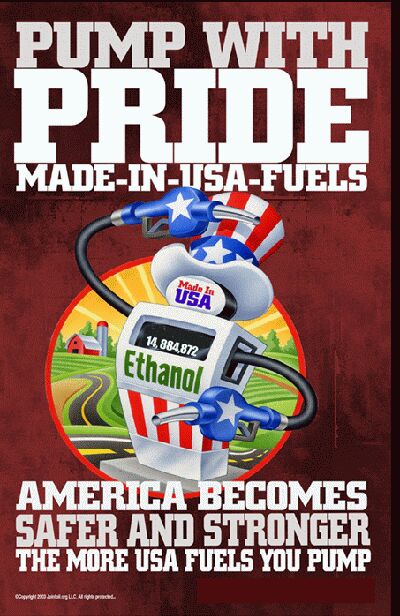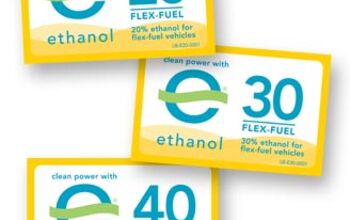E85 Boondoggle Of The Day: Mandatory Flexibility
Green Car Congress reports that an “Open Fuel Standards Act” has been introduced which would require half of all light duty vehicles sold in the US to be flex-fuel capable. The legislation would ramp up requirements to mandate 80 percent flex-fuel capability by 2015. Since ethanol has been running into trouble of late, the industry’s plan now centers on forcing OEMs to bring flex-fuel capability across their lineups, which supporters say will drive greater availability of E85 pumps. The plan would also enable the proliferation of mid-range ethanol blends like E20 and E30, since E85-capable flex-fuel vehicles would also be able to run on the intermediate blends that the ethanol industry so desperately wants to become mainstream. The only waivers for this mandate would be for OEMs who can prove that ethanol fuels prevent plug-in hybrids and other alt-energy vehicles to flunk state emission standards. Meanwhile, as rules are being written for the Renewable Fuel Standard, and a group of Senators are moving to prevent the use of indirect land use change (ILUC) to calculate the total GHG output of biofuels.
The law mandates measurement of “direct emissions and significant indirect emissions such as significant emissions from land use changes, as determined by the Administrator.” And though there are many complexities in attempting to calculate the full impact of biofuels, Senators don’t see this as a challenge to be undertaken, but a baby to be thrown out with the bathwater. The senators “urge EPA to refrain from including any calculations of the ILUC components in determining life-cycle GHG emissions for biofuels at this time. The premature publication and use of inaccurate or incomplete data could compromise the ability to formulate a sound approach to implementing this life cycle GHG emissions requirement in the future. And the resultant rulemaking confusion could seriously harm our US biofuels growth strategy by introducing uncertainty and discouraging future investments.” Oh yeah, and we would have to find new campaign contributors too.
More by Edward Niedermeyer
Latest Car Reviews
Read moreLatest Product Reviews
Read moreRecent Comments
- Dr.Nick What about Infiniti? Some of those cars might be interesting, whereas not much at Nissan interest me other than the Z which is probably big bucks.
- Dave Holzman My '08 Civic (stick, 159k on the clock) is my favorite car that I've ever owned. If I had to choose between the current Civic and Corolla, I'd test drive 'em (with stick), and see how they felt. But I'd be approaching this choice partial to the Civic. I would not want any sort of automatic transmission, or the turbo engine.
- Merc190 I would say Civic Si all the way if it still revved to 8300 rpm with no turbo. But nowadays I would pick the Corolla because I think they have a more clear idea on their respective models identity and mission. I also believe Toyota has a higher standard for quality.
- Dave Holzman I think we're mixing up a few things here. I won't swear to it, but I'd be damned surprised if they were putting fire retardant in the seats of any cars from the '50s, or even the '60s. I can't quite conjure up the new car smell of the '57 Chevy my parents bought on October 17th of that year... but I could do so--vividly--until the last five years or so. I loved that scent, and when I smelled it, I could see the snow on Hollis Street in Cambridge Mass, as one or the other parent got ready to drive me to nursery school, and I could remember staring up at the sky on Christmas Eve, 1957, wondering if I might see Santa Claus flying overhead in his sleigh. No, I don't think the fire retardant on the foam in the seats of 21st (and maybe late 20th) century cars has anything to do with new car smell. (That doesn't mean new car small lacked toxicity--it probably had some.)
- ToolGuy Is this a website or a podcast with homework? You want me to answer the QOTD before I listen to the podcast? Last time I worked on one of our vehicles (2010 RAV4 2.5L L4) was this past week -- replaced the right front passenger window regulator (only problem turned out to be two loose screws, but went ahead and installed the new part), replaced a bulb in the dash, finally ordered new upper dash finishers (non-OEM) because I cracked one of them ~2 years ago.Looked at the mileage (157K) and scratched my head and proactively ordered plugs, coils, PCV valve, air filter and a spare oil filter, plus a new oil filter housing (for the weirdo cartridge-type filter). Those might go in tomorrow. Is this interesting to you? It ain't that interesting to me. 😉The more intriguing part to me, is I have noticed some 'blowby' (but is it) when the oil filler cap is removed which I don't think was there before. But of course I'm old and forgetful. Is it worth doing a compression test? Leakdown test? Perhaps if a guy were already replacing the plugs...


































Comments
Join the conversation
"Don’t use my tax money to pay for the research or infrastructure of E85. Look for venture capital. If no one is interested, probably it’s a bad idea. If someone invested and earned big, good for him." You do know that the Internet and GPS technology both started as government funded projects, yes? To this day, GPS receivers rely on signals provided gratis by the US government's network of GPS satellites.